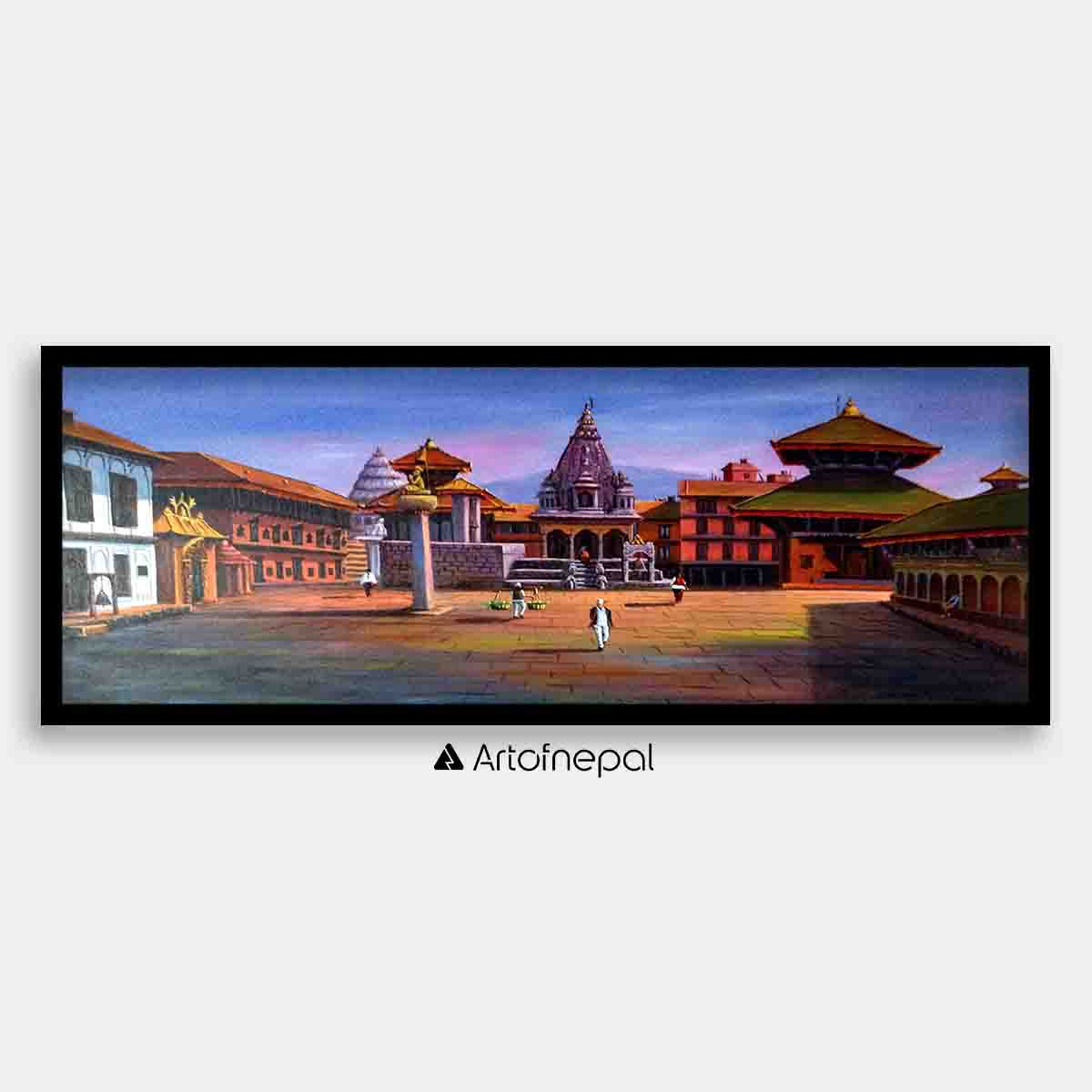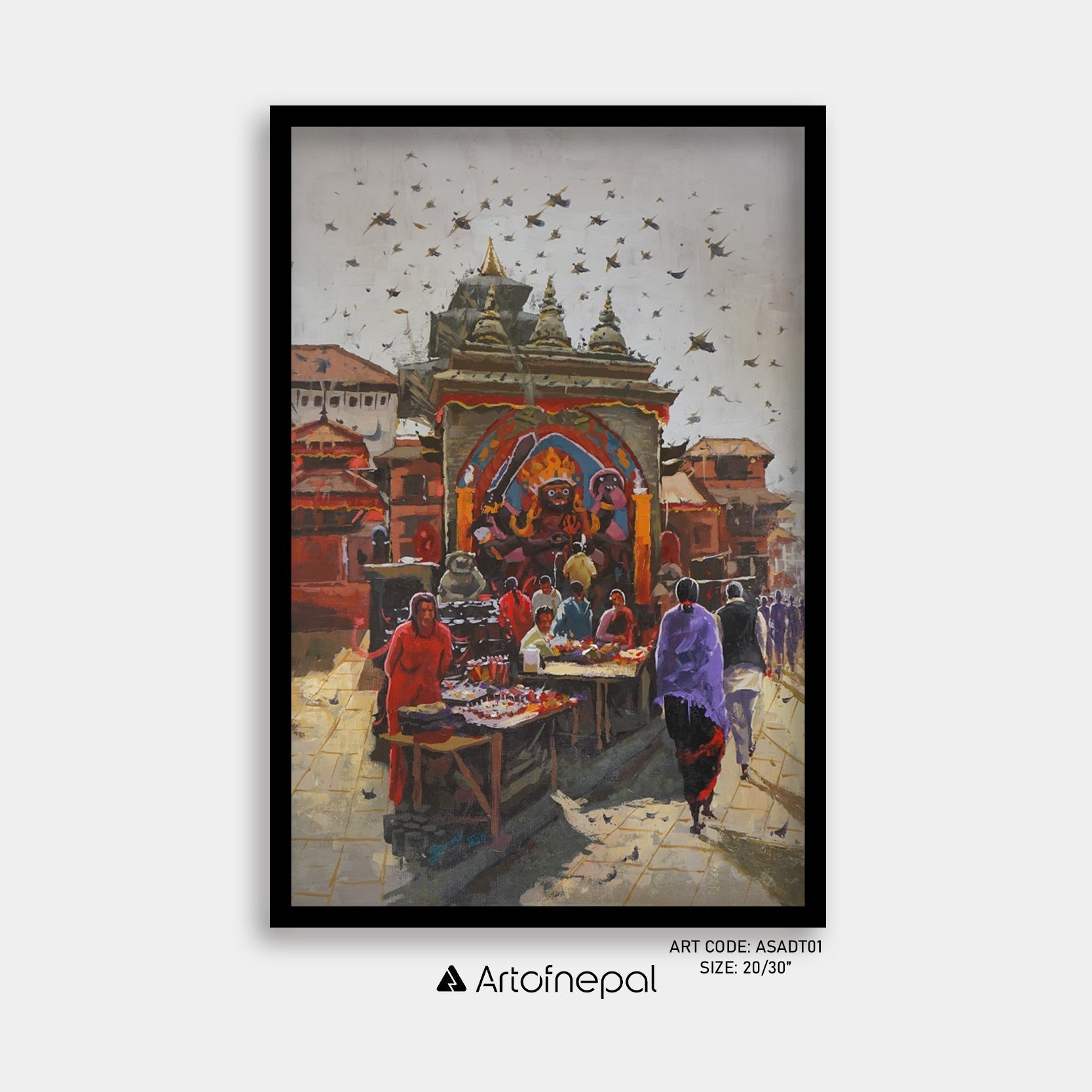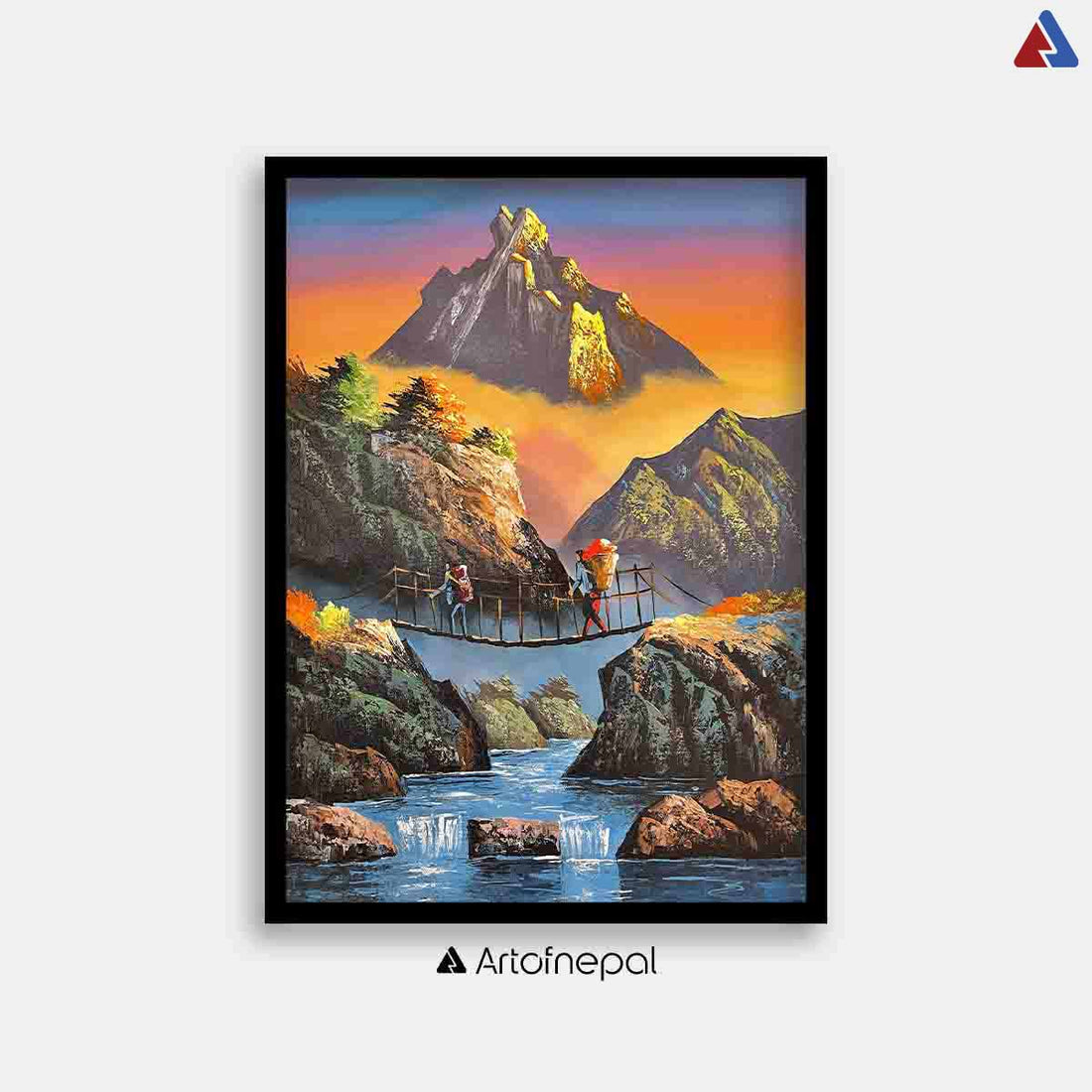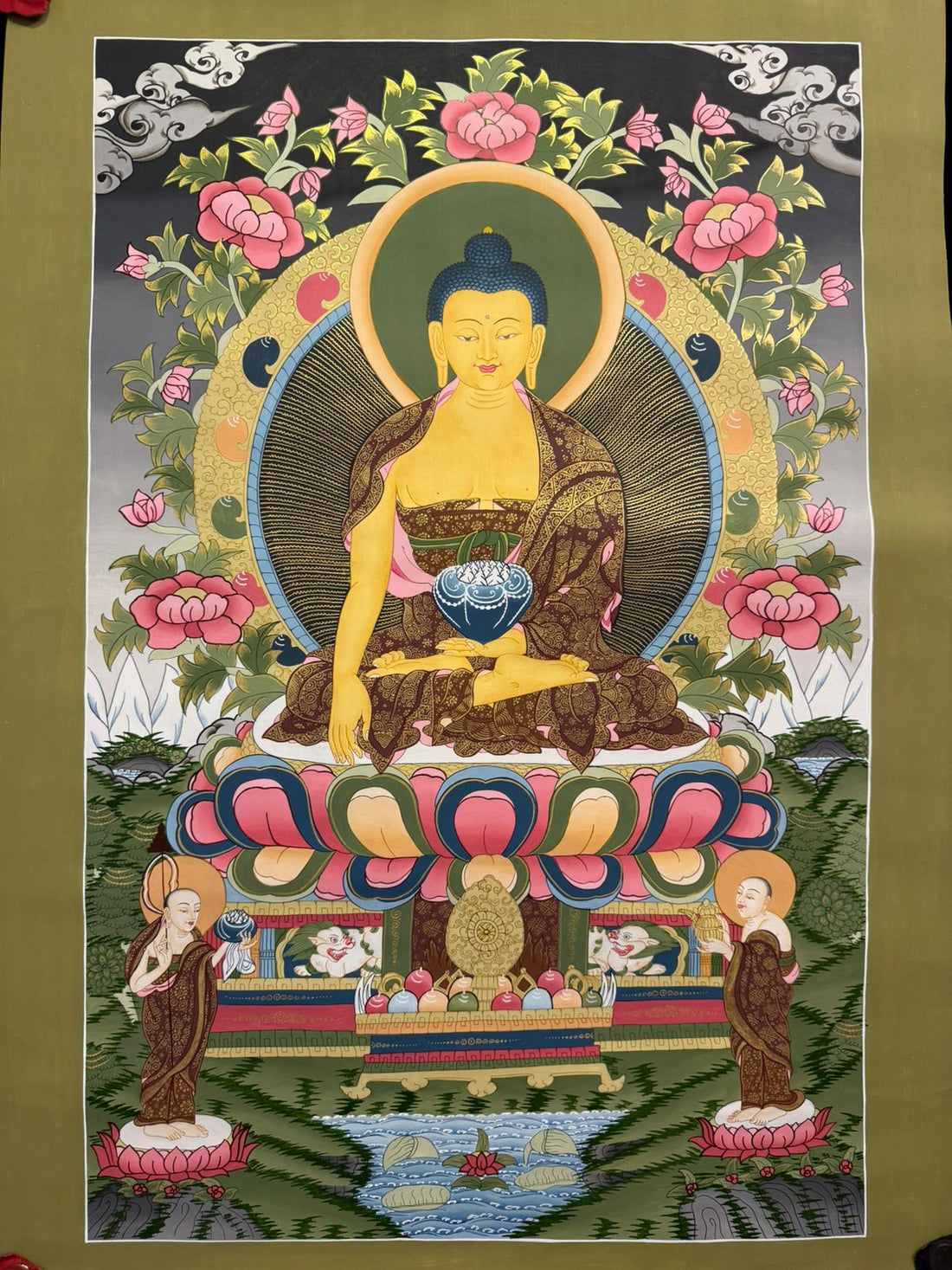Nepal is the country of stunning views, spiritual depth and ancient traditions. The tallest of the Himalayas to busiest streets of Kathmandu every corner of Nepal tells a story. And what is better than art to capture these stories?
Art has been a way of capturing the core of Nepal as its rich culture, various communities and natural wonders. Nepali artists have been ensuring that they bring the Nepalese soul to canvas whether in little Thangka paintings, in striking landscapes or elaborate mandala work. However, what is so special about Nepali art? Does it really reflect the beauty of our land?
Let's explore how the various types of art can embrace the identity of Nepal ,allowing both the local people and the foreigners worldwide to experience the magic of Nepal.
The Himalayas: A Source of Artistic Inspiration
Whenever one mentions Nepal, the Himalayas is the first thing that crosses the mind. There are eight of the fourteen highest mountains in the world which includes Mt. Everest, the highest of all the mountains followed by Mt. Annapurna, Mt. Kangchenjunga, Mt. Lhotse, Mt. Makalu, Mt. Cho Oyu, Mt. Dhauligiri and Mt. Manaslu. These mountains are not only geographical landmarks but also have cultural, spiritual and artistic importance.
The beauty of the Himalayas has always attracted the attention of artists. The mountains are touched by golden sunshine in the morning and at evening they turn into a cool shade of blue. Effects of light, hazy valleys and snow-covered peaks provide a constantly shifting landscape which painters attempt to depict in their art. I'm
Elements of Nepali landscape paintings are prayer flags beating the air in the mountain, small stone houses in remote valleys, and yak caravans moving through the rough landscape. A picture of the Himalayas is not just a piece of art to many people; it is a reminder of peace, adventure and the undefeatable spirit of Nepal.
Kathmandu Valley’s Architectural Grandeur in Art
The Himalayas describe the natural beauty of Nepal whereas Kathmandu valley showcases the rich cultural and artistic background of the country. Strolling through the streets of Kathmandu, Bhaktapur and Patan is like entering a museum which is still alive where ancient temples, palaces and courtyard which narrates the history of dynasties, craftsmen, and devotion.
Nepali artists dedicate their work to conserving the architectural wonders of the Kathmandu Valley by using paintings. The most common landmarks that have been portrayed are:
-
Bhaktapur Durbar Square: This is a UNESCO World Heritage Site that is known for stunning Newar architecture, ancient temples and elaborate wood carvings. It is situated right at the core of Bhaktapur and it represents the rich cultural and historical heritage of Nepal ,making it a must place to visit for any history and art lover .

-
The Kalbhairab Temple: It is located in the very heart of Kathmandu Durbar Square and is devoted to the fearsome manifestation of Lord Shiva, Kalbhairab. The temple has its complex carvings and historical importance, so it is a sacred place for locals and represents the strong presence of Hindu traditions in Nepal.

-
The Changunarayan Temple: It is located on a hilltop area near Bhaktapur and is one of the oldest Hindu temples in Nepal which is dedicated to Lord Vishnu. The temple is over 1500 years old and is known for attractive architecture and carvings as well as the fact that it is a UNESCO World Heritage site with a rich history.
Artists make these architectural wonders alive by using warm earthly colours and detailed brushwork highlighting craftsmanship and spirituality of Nepal. Not only do these paintings help us keep the record of the past, but also helps to recall the need to preserve the heritage of Nepal for future generations.
Nature and Everyday Life: The Heartbeat of Nepali Art
Nepalese artists do not only paint mountains and temples, they also capture common scenes in the villages, towns and farmlands.
Common examples used in painting would include a farmer in the golden rice field, children in the green valley, or an old woman spinning a prayer wheel in a quiet monastery. These paintings underline the beauty of such simple and deep life in Nepal. It connects the viewers with how life feels at home even when they are very far away from it . It captures the soul of simple everyday life which becomes the most precious memory you can have when you are far away from it . One only has to look at a painting and experience his childhood and the feeling of home.
Rivers and Valleys: A Painter’s Paradise
Nepal is blessed with many rivers meandering over the hills and valleys. Scenes depicting boats sailing past the Phewa lake, Trishuli river raging through its gorges or the calm Bagmati river winding around the temples of Kathmandu have been painted by artists.
These paintings also help the viewers to remember the strong relation of Nepal with nature which has been shaping its traditions, festivals and lifestyle for several centuries. It captures the beauty with textures and detailing which sometimes even photographs cannot capture.
Festivals and Cultural Celebrations
There are more than 120 ethnic groups and 123 languages in Nepal and each of them has its traditions and festivals. The artists can often portray the energy of events such as:
- The Indra Jatra : This is a festival of Kathmandu which is celebrated with masked dances and chariot processions.
- Tihar (Festival of lights): Shown as rows of oil lamps and colorful rangoli designs.
- Holi - The festival of colors, in which splashes of bright colored powder brings to life a dynamic picture.
The art maintains and glorifies the various Nepalese cultural identity so that even people miles apart can have a sense of belonging to their native land.
Traditional Art Forms: The Legacy of Nepali Handicrafts
In addition to the paintings on canvas, Nepal is very rich in handmade forms of art.
Thangka Paintings: Spiritual Masterpieces
One of the highly regarded art forms in Nepal is the Thangka paintings. They are also complex and are painted by hand and show Buddhist gods, mandalas, and religious narratives. They take months, and even years, to be finished and artists are constrained by strict guidelines in order to keep their spiritual accuracy.
All colors in a Thangka mean something:
- Gold is a symbol of enlightenment.
- Blue symbolizes wisdom.
- Red conveys compassion.
Possession of Thangka is not simply about beauty, but about spirituality, meditation and tradition.
Mithila Art: Stories in Color
Mithila art (also called Madhubani art) is a colorful Nepali art, hailing in the Terai region, and is known to tell stories. Mithila paintings include the use of colors that were originally done by women to decorate their homes.
- Complex floral and geometrical designs.
- Mythological and folklore scenes.
- Bright reds and greens, and yellows made from natural dyes.
These traditional arts are still going strong to date as Mithila paintings are now put on canvas and paper, and even on modern home decor, by the artisans.
Why Nepali Art Matters: A Connection to Home and Identity
To the Nepalis living abroad, holding a Nepali art is like bringing a bit of Nepal with them. An image of Everest, a Thangka of Buddha or a street shot at Kathmandu provides a kind of nostalgia and identification or belonging.
To foreign enthusiasts, Nepali art is an opening to the world of stunning beauty and deep spiritualism. It is not only for decoration but also for story, memory, and a call to travel and experience Nepal.
Art as a Way to Support Local Artists
People also support local artists and artisans when buying authentic Nepali paintings and handicrafts so that they can carry on with their trade in a more digitalized society. Platforms like Art of Nepal allow artists to present their work to the world with a global audience while ensuring they get fair compensation for their talent and hard work.










